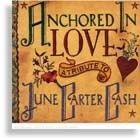For nearly 20 years, Dan Boul and Peter Stroud have been close friends. In a bond secured by music, particularly guitars and amps, the two have gone through the phases of life in very similar fashion, working as professional guitarists and being hardcore gearheads with a penchant for tinkering.
A couple years ago, they decided to get serious. Caught up in a wave of boutique amp builders who share information via the internet, they were inspired after hearing some of the amps built by friends.
After 18 months of experimentation, they’d devised their “dream” amp (which soon after became their first production model, the London) and though they never intended to build amps to sell, pretty much every player who heard them said, “I want one!” Next thing you know, Boul and Stroud were known collectively as 65Amps!
Stroud (featured in VG, December ’04) still plays guitar professionally, holding down the lead spot in singer/songwriter Sheryl Crow’s band, touring the world, trusty London model by his side for thousands of people to see each night. Boul, meanwhile, has switched gears to run a shop that now employs five very experienced amp builders.
After a very long wait, we were recently able to take a London model on an oh-so-brief test run before the amp had to be hustled off to New York City in time to make an appearance with Switchfoot on “Late Night With Conan O’Brien.”
Much about the London’s circuit design reflects its inspiration – the mid-’60s 18-watt Marshall Model 1958. Its four inputs (Lo and High for Normal and Tremolo channels) share controls for Volume and Tone. But each channel has a distinct voice, thanks primarily to its preamp tube; Normal employs an EF86, while Tremolo uses a 12AX7. If you’ve played a tube amp, you’re likely familiar with the bright tone and big low-end response of the 12AX7. The EF86, meanwhile, offers a smoother overall output.
All wiring and solder dress in the London is top-shelf, and it’s obvious Boul and Stroud did their legwork when choosing components; transformers are custom-wound by Mercury Magnetics, the Baltic birch plywood cabinet work is flawless, and the vinyl covering and art deco/retro vent grilles make for a very appealing visual presentation.
Setting the London apart from its Marshall inspiration is the Vox-inspired six-way Color switch, to which Boul and Stroud added a tone-sweep. The effect focuses low and low-mid frequency response.
The Normal channel sports a Boost function that can also be controlled with the footswitch. The Tremolo channel, has controls for Speed and Intensity of the effect, which is also footswitchable. The channels share a Cut control for adjusting “brilliance.” The amp’s rear panel hosts the footswitch jack and parallel speaker jacks with an impedance selector, fuse holders, and the power cord.
The London’s standard cab uses one 12″ Celestion Blue Alnico and one 12″ Celestion G12H30 speaker, with Tone Tubby speakers as an option.
We tested the London using our favorite ’70s Ibanez Artist with Wolftone Greywolf humbuckers and a ’90s Hamer Daytona with Rio Grande vintage Tallboy single-coils in the neck and middle positions, and a Rio Muddy single-coil in the bridge.
We plugged the Daytona into the Lo input of the Normal channel, set to clean, with Color switch on 1, Cut at 0, and Tone on 10. Immediately, we were greeted with a huge, fat clean tone with solid bottom punch and very ample low-mids. High-end response was sparkley, and we were also immediately impressed with the amp’s touch response.
We shuffled the Color switch through several settings and were easily able to balance the tone, across the board. Pushing the volume up, we found a nice, smooth overdrive, and switching on the Boost oh-so-appropriately bumped the volume and gain – this is a great feature for soloing. Plugging into the high input gave our sound more punch, volume, and gain that was always supremely smooth and tight.
The Color switch lets the user dial in thickness, which is an especially handy feature if your stage routine requires switching guitars/pickup configurations. Ramping up the volume, we got more gain, but the tone always remained tight. Then we got serious, pushing the amp to full volume. And we weren’t all that surprised to find that the amp remained tight and extremely focused, always with incredible tone and response. The Cut control lent subtle contour to the amp’s presence. The Overdrive was smooth, with nice sustain and great note separation. The London’s tone was great in all pickup positions.
Switching to the Tremolo channel’s Low input, we got nice fullness with less low-midrange emphasis. Rolling up the volume revealed nice blues gain with less sparkle. Using the Hi input, we got the requisite jump in volume, gain, and sparkle. This channel produces a more traditional sound, with more clarity than the Normal channel. And it produces less gain. We pushed the volume and got clear, glassy, well-balanced and punchy tone.
Dimed, the London again didn’t strain in any part of the tonal spectrum. Instead, it offered incredible responsiveness and note separation. Low-mids through the Tremolo channel aren’t as plump, but again, sound more pure.
With the Ibanez through the Normal channel’s Lo input, we again got a very clean, punchy tone, with less sparkle. And as with the single-coils, the Color switch let us “plump up” the tone to our heart’s content. The Hi input responded like it should while never surrendering tight, well-focused gain no matter how hard we pushed the Volume knob, all the way to maximum. The Tremolo channel responded similarly, with clear, focused tone with less gain, but incredible purity.
For the lagging naysayers who squeal, “Eighteen watts ain’t enough!” Rest assured, through its 16-ohm cab, the London is very loud. And the Tremolo was smooth and even, with lots of depth.
The London offers incredible sounds with virtually any guitar, delivering fantastic gain, clarity, punch, response, smoothness, tightness. And most importantly, the London does it with a tone that it can proudly claim as entirely its own. It simply sounds amazing.
65Amps London
Features: All-tube (12AX7/EF86/A EL84) hand-wired circuitry, custom-wound transformers, Baltic birch cabinets, Celestion or Tone Tubby speakers, multi-function footswitch.
Price: $2,195 (head), $895 (cab), $2,895 (combo).
Contact: 65Amps, 24925 Morella Ave, Valley Village, CA 91607; phone (818) 919-4925; 65amps.com.
This article originally appeared in VG‘s Dec. ’05 issue. All copyrights are by the author and Vintage Guitar magazine. Unauthorized replication or use is strictly prohibited.
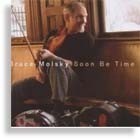

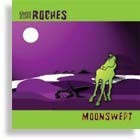
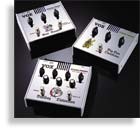
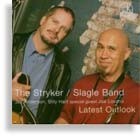
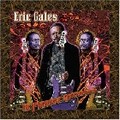
.jpg)
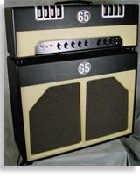
.jpg)
